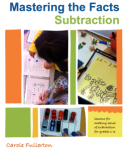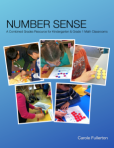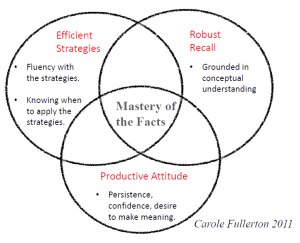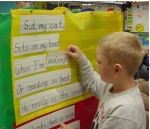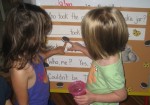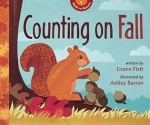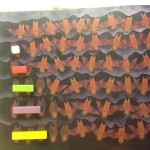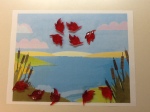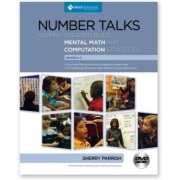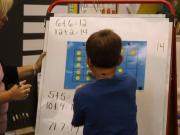 The daily calendar has been a routine in many primary classrooms since the 1970’s when Math Their Way created it. It was revolutionary in those days. It was viewed as an opportunity to expose students to patterns and counting. Calendar was considered an important part of daily math instruction.
The daily calendar has been a routine in many primary classrooms since the 1970’s when Math Their Way created it. It was revolutionary in those days. It was viewed as an opportunity to expose students to patterns and counting. Calendar was considered an important part of daily math instruction.
In its original form, it was a fairly passive experience for children. Most young learners watched as one of their peers completed a pattern, listened as others counted, or chanted along with the group. While we recognize the value of daily exposure to mathematical ideas, the passive nature of this imagining of calendar often did not meet the needs of many of our learners.
What we have learned and are continuing to learn about the brain, how children acquire mathematical concepts, and developmentally appropriate practice has lead us to re-examine this traditional approach.
Carole Fullerton and I decided we needed to “Kill the calendar”! In many of the 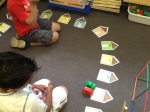 classrooms we were working in, students (not to mention the teachers) often seemed disengaged with the calendar routines. We decided to create the resource called ‘Daily Math Investigations’. In this resource, we present a more active, participatory version of “calendar” – a daily opportunity for students to truly engage with meaningful math concepts, to play with materials, to process, think, and problem-solve. The tasks, questions and problems we have included in this resource are intended to inspire thoughtful math investigations into number, shape, measurement and pattern. Daily Math Investigations allow students to explore math concepts in real and embedded ways.
classrooms we were working in, students (not to mention the teachers) often seemed disengaged with the calendar routines. We decided to create the resource called ‘Daily Math Investigations’. In this resource, we present a more active, participatory version of “calendar” – a daily opportunity for students to truly engage with meaningful math concepts, to play with materials, to process, think, and problem-solve. The tasks, questions and problems we have included in this resource are intended to inspire thoughtful math investigations into number, shape, measurement and pattern. Daily Math Investigations allow students to explore math concepts in real and embedded ways.
Daily Math Investigations are an opportunity for students to think and play with mathematical ideas. Teachers present tasks and pose questions that are intended to  promote curiosity about numeracy concepts. In opening up the kinds of questions we ask, we include more students in the learning of math, and help to address the range of learners in our classrooms. A combination of entry tasks and rich routines allow for balance between whole group, small group and independent learning, a chance for students to explore the math at their level.
promote curiosity about numeracy concepts. In opening up the kinds of questions we ask, we include more students in the learning of math, and help to address the range of learners in our classrooms. A combination of entry tasks and rich routines allow for balance between whole group, small group and independent learning, a chance for students to explore the math at their level.
A monthly calendar gives us interesting information. We can use it to mark important events, like an upcoming holiday, a student’s birthday or a school celebration. Highlighting these events on a calendar and counting the days until they happen is fun for students.
 For many of us, calendar time (and all of the activities associated with it) is ingrained in our script for primary teaching. It’s important, however, to consider carefully the purpose of these tasks – and more importantly, their effectiveness. We don’t believe in ‘throwing the baby out with the bath water’. But ask yourself, “What should I keep?” “What should I let go?”
For many of us, calendar time (and all of the activities associated with it) is ingrained in our script for primary teaching. It’s important, however, to consider carefully the purpose of these tasks – and more importantly, their effectiveness. We don’t believe in ‘throwing the baby out with the bath water’. But ask yourself, “What should I keep?” “What should I let go?”
Ask yourself a few questions:
1. Are the pieces of my calendar routine truly relevant?
2. Are students talking about the math?
3. Are the students engaged?
4. Are the students doing math?
Thank you, Carole, for sharing your wonderful ideas. If you’d like to get a copy of “Daily Math Investigations’, please go to Carole Fullerton’s blog, http://mindfull.wordpress.com/.
On October 22, 2013 over 80 amazing teachers attended an afterschool in-service about ‘Daily Math Investigations.’ As they entered the room, they were invited to ‘engage in’ and explore several ‘Entry Tasks’. The room was full of conversations, discovery and engagement. They were talking and doing the math. This is the vision for all primary classrooms. What do you think?



 Another amazing group of over 70 primary teachers met after school to learn more about teaching the ‘Basic Addition and Subtraction facts’ in a meaningful way on February 12, 2014. This was part one of a two-part series. I am always so thrilled to see the dedication of hard working, caring teachers who want their students to truly make sense of mathematics.
Another amazing group of over 70 primary teachers met after school to learn more about teaching the ‘Basic Addition and Subtraction facts’ in a meaningful way on February 12, 2014. This was part one of a two-part series. I am always so thrilled to see the dedication of hard working, caring teachers who want their students to truly make sense of mathematics.
